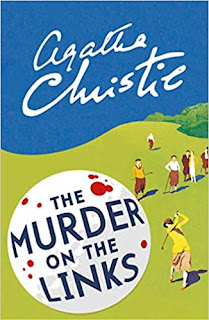Writer explored her own interests in her novels and short stories
Today marks the anniversary of the death in 1983 of Gladys Mitchell, who was once regarded as one of the top three British women detective writers. 
Gladys Mitchell wrote novels
alongside a career in teaching
She wrote 66 novels featuring her amateur sleuth, Mrs Beatrice Adela Lestrange Bradley, as well as mystery novels under the pen name, Malcolm Torrie, and historical adventure novels under the pen name, Stephen Hockaby.
A teacher by profession, Gladys wrote at least one novel a year throughout her career.
She got off the mark in 1929 with Speedy Death, which introduced Mrs Bradley, and she never looked back, gradually building a large and loyal following for her eccentric, but brilliant, detective.
Gladys was an early member of the Detection Club along with Agatha Christie, G K Chesterton and Dorothy L Sayers, but frequently satirised or reversed the traditional patterns of the genre.
Gladys studied the works of Sigmund Freud and made her series detective, Mrs Bradley, a distinguished psychoanalyst. She also developed an interest in witchcraft, which features in some of her novels.
In 1961, Gladys retired from teaching but continued to write her detective novels. She received the Crime Writers’ Association Silver Dagger in 1976.
 |
| Gladys Mitchell's story, Our Pageant, is included in Serpents in Eden |
Gladys was interested in architecture, ancient buildings, folklore and British customs, themes that were often explored in her novels and short stories.
She originally published many of her short stories in the Evening Standard, but they are now being made available to detective fiction fans again in the anthologies published by the author Martin Edwards for the British Library Crime Classics series.
Our Pageant, a story by Gladys Mitchell first published in the Evening Standard in the 1950s, is included in Serpents in Eden, a volume of countryside crime stories published in 2016.
The story does not feature Mrs Bradley, but it reflects the author’s enthusiasm for British customs. It is very short, only four pages in total, but Gladys makes every word count and there is, of course, a twist at the end. It is well worth the read.
Books by Gladys Mitchell are available fromand
Books by Martin Edwards are available from and



